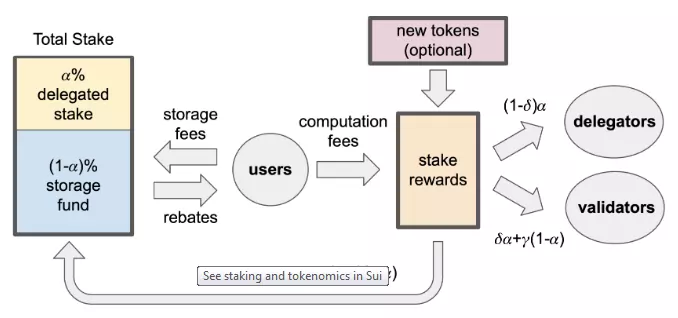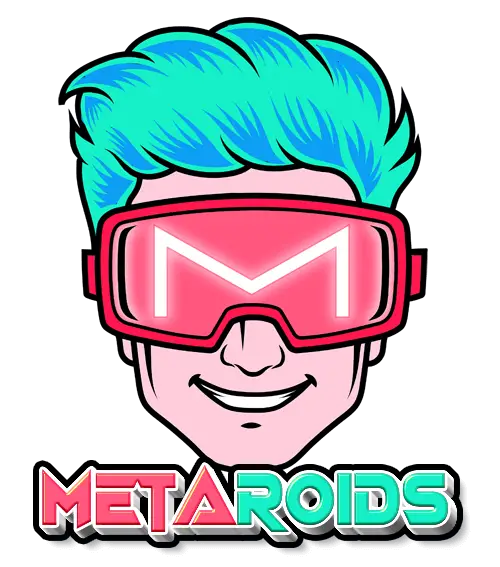When FTX, Andreessen Horowitz, and Coinbase Ventures fund a new layer (L1) blockchain platform, something big is probably being developed. But not much media attention has been given to Sui as of today. But considering that smart money is assembling around it, this might actually be the next big L1.
Like Solana, Sui, is considered to be a highly-scalable blockchain. Interestingly, it is built on a new smart contract language that is based on Rust and designed to represent digital assets and the safety operations required to manage them. Furthermore, its nodes can scale network transaction capacity infinitely with minimal hardware requirements. For instance, a node that runs on a mere 8-core M1 Macbook Pro is said to be able to process 120,000 transactions per second.
You may bookmark this guide as your full Sui blockchain resource as we’ll update it periodically according to changes that occur.
What is Sui?
Sui is a new proof-of-stake (PoS) and general purpose Layer 1 (L1) blockchain that boasts high throughput, low latency, robust security, instant finality, and low fees. Through these ideal combinations, it aims to bring a high-performance network for broad adoption.
The new kid on the block “chain” is spearheaded by Mysten Labs, comprised of founders involved in developing Meta’s previous Novi, Libra, and Diem initiatives. The blockchain is currently running a public devnet and plans to roll out an incentivized testnet in August 2022.
Fun fact: Sui is pronounced as “sweet,” without “T,” and means “water” in Japanese.
Blockchain’s Current Issues
Sui aims to deal with some of the biggest hurdles in blockchain technology, including risky programmability methods and limited options for data storage procedures. These problems leave developers with no choice but to compromise on critical areas such as user experience (UX) and functionality.
Sui’s Scaling Capabilities
Sui has a feature called “horizontal scaling,” a capability that adds more nodes to its platform, which keeps its infrastructure fast and gas fees low despite rising computational demands. Furthermore, this feature allows Sui to surpass the transaction speed of giant payment networks such as SWIFT and VISA.
One of Sui’s advantages over other blockchain networks is its high-performance platform, which can process more than 120,000 token transfers per second. Thanks to a feature called “transaction parallelization,” which is an innovative way of managing blocks, resulting in higher throughput. Note that most L1 blockchains today don’t use this mechanism.
Another advantage of this feature is low latency, which reduces the communication demand between validators when processing transactions. As a result, the system can validate simple transfers almost instantly and complex ones in just two to three seconds. Despite being tested in a controlled environment, these capabilities have the potential to bring impressive results during mainnet deployment.
Sui’s fast and cheap transactions can also roll out mass airdrops that can seamlessly reach millions of web3 wallet owners. This capacity is ideal for web3 services’ loyalty and rewards programs. Sui also offers secure tokenization services that smoothly integrate ownership of a wide range of valuable and critical assets, including property deeds and medical and educational records.
Sui Aims to Explore Four Industries
The Sui team aims to position the blockchain on four key applications: gaming, decentralized finance (DeFi), commerce, and social. Since these four areas demand highly-efficient and low-cost transactions, they can readily tap Sui’s dual combination of high throughput and low latency capabilities. Sui is also preparing the road for the emergence of decentralized social media networks, a new concept that can potentially bring more profits and privacy to content creators.
Who Created Sui Blockchain?
Sui blockchain is developed by Mysten Labs, a team composed of former Novi/Diem developers who are experts in cryptography, programming languages, and distributed systems. Mysten aims to establish a foundational infrastructure for web3 and bring blockchain technology closer to people.

Mysten Labs’ founders are Evan Cheng, Adeniyi Abiodun, Sam Blackshear, George Danezis, and Kostas Chalkias, who were all part of Meta’s Novi development team.
Andreessen Horowitz (a16z), web3’s most recognized venture capital firm, invested $36 million in Mysten Labs’ Series A funding last December 2021. For the start-up’s Series B funding in July 2022, FTX Ventures (the venture capital arm of the FTX crypto trading platform) committed $140 million. Mysten Labs’ other early investors include Samsung NEXT, Redpoint, Coinbase Ventures, Scribble Ventures, and Lightspeed Venture Partners.
Move: The Programming Language of Sui
Move is a cross-platform, open-source programming language that allows developers to write secure smart contracts. The language, which aims to be the “JavaScript of web3”, is designed for blockchain and has robust security, as well as a more understandable programming model. One important thing to note here is that it doesn’t possess any blockchain aspects such as cryptography, transaction times, and accounts.
Move started as a concept, which, through the help of experts along the way, has evolved as an advanced platform-agnostic smart contract language. It resulted from its creators’ thorough research on what developers truly need in a smart contract and programming language.
It also narrowed down on use cases with the highest demands for developers and end users. Moreover, the Sui developers created Move to offer safety and productivity for smart contracts and programmers.
Diem: The First Platform to Test Move
Move is a programming language that was primarily designed for Meta’s Diem project, which managed Facebook’s previous cryptocurrency venture. The now-defunct project was the first blockchain to integrate Move into its platform.
Other blockchains such as Aptos, 0L, and Starcoin have also utilized Move’s technology in their operations. Aptos, for its part, is gearing up to release its testnets and mainnets months from now. And together with Sui, it is set to display the capabilities and greater potentials of Move.
The Challenge with Solidity
Today, Solidity is arguably the most widely-used blockchain programming language yet it remains inefficient due to its inherent vulnerabilities, reducing developers’ capacity to build secure smart contracts.
While developers can always implement third-party code audits (which can be long and expensive) and temporary guardrails when deploying their smart contracts, this isn’t enough to eliminate all risks.
Since smart contracts handle critical and highly sensitive tasks, including managing hundreds of millions of dollars, optimizing their language must be a top priority. Move intends to deal with all these concerns and offer developers clear solutions to secure their smart contracts better.
Move Prover
The programming language also has a “Move Prover” feature, which lets developers accurately monitor if their codes function according to their design. By alerting developers that their codes are “misbehaving,” they can quickly act and mitigate the effects of any bugs or exploitations in real time.
SUI Tokenomics
$SUI is the platform’s native utility token, which participants can use to pay fees to execute transactions or stake them to earn passive income while contributing to network security. The token, which has a 10 billion supply, can also be utilized for governance voting, such as network upgrades and other actions within the ecosystem.

Low and Predictable Gas Fees
Sui’s gas pricing system aims to incentivize the three critical contributors of the network: its validators (with good behaviors), SUI token holders, and its users. It also aims to be the opposite of other blockchain networks with problematic and unpredictable transaction fees that shoot up at unbelievable prices. As a solution, Sui has created a mechanism that keeps its gas fees low (and) predictable to deliver a competitive alternative over other established blockchain platforms.
As an overview of this system, the platform lets validators vote on a reference gas price for each epoch (equivalent to 24 hours). Validators who can keep transaction fees close to the reference price for the entire epoch will receive incentives from the network. Furthermore, by maintaining a stable gas price, Sui can process its transactions at predictable speeds, greatly benefiting platform users.
Storage Fund
Storage fund is a charge that users must pay whenever they submit data on-chain. The platform uses these fees to cover validators’ expenses in storing their data. It is also economical for users because they can always delete their data once they’re not needed and receive a rebate from the storage fund as a plus.
Sui Wallet
Sui Wallet allows users to create an address, interact with decentralized applications (dApps), and view and manage their assets on the network. Since it’s a pioneering wallet in the Sui blockchain, it serves as a “reference implementation” for wallets and applications that will soon use the ecosystem.
The Sui wallet will base its foundations not only on the founders’ preferences but also on the feedback of the developer community. These suggestions are submitted and discussed on the blockchain’s Discord channels.
But the primary purpose of the wallet right now is to be a testing medium so we learn from its developments and outcomes instead of being the de facto wallet of the Sui blockchain.
Furthermore, as the definition of a “web3 wallet” continues to evolve, Sui’s team and community are ready to adapt to these changes when necessary.
How to Create a Sui Wallet?
Step 1) Search “Sui Wallet Browser” on the Chrome Web Store.

Once done, click “Add to Chrome” and “Add Extension.”
Note: The team initially released the wallet extension on Google Chrome. For non-Chrome users, please download the browser to access the wallet and its benefits.
Step 2) Pin Your Sui Wallet.
Search the Sui Wallet on the “Extension” tab in your screen’s upper right corner, and pin it.
Step 3) Set up Your Wallet.
Click the Wallet and select “Get Started”. Then click the “Create New Wallet” button. Then select the ticker box and click “Create.”

Step 4) Secure Your Recovery Phrase.
Your recovery phrase should appear. Save or write these words down. Remember, you will need them in case you lose access to your wallet. Lose them and you lose the chance of recovery. Once Finished, Click “Done”.
Your wallet should now be ready.
Sui: An Innovative Gaming Platform
The Sui network enables developers to create dynamic, fun, and immersive games by letting them focus on the creative side (and not be burdened by too many technicalities).
Sui Monstars is the network’s prototype web3 game that aims to showcase the L1 blockchain’s speed, scalability, and mutable (customizable) non-fungible tokens (NFTs). But apart from these capabilities, Sui also intends to prove that the complexities of learning a new programming language should not hinder game developers’ creativity.

The platform will release a software development kit (SDK) to help ease the creation process for developers who plan to tap Sui for web3 game development. Geniteam, a game development studio, created and developed Sui Monstars using the protocol’s application programming interface (API) and the Unity SDK.
An important aspect to highlight is that no member of the Geniteam is a smart contract or Move developer, and yet, it has successfully created an exciting game for Sui. The team has minted mutable NFTs fully on-chain by simply using the provided APIs and SDK. This project highlights what game developers can unlock from the Sui blockchain even without high-level expertise in smart contracts and other programming languages.
Join our newsletter as we build a community of AI and web3 pioneers.
The next 3-5 years is when new industry titans will emerge, and we want you to be one of them.
Benefits include:
- Receive updates on the most significant trends
- Receive crucial insights that will help you stay ahead in the tech world
- The chance to be part of our OG community, which will have exclusive membership perks



